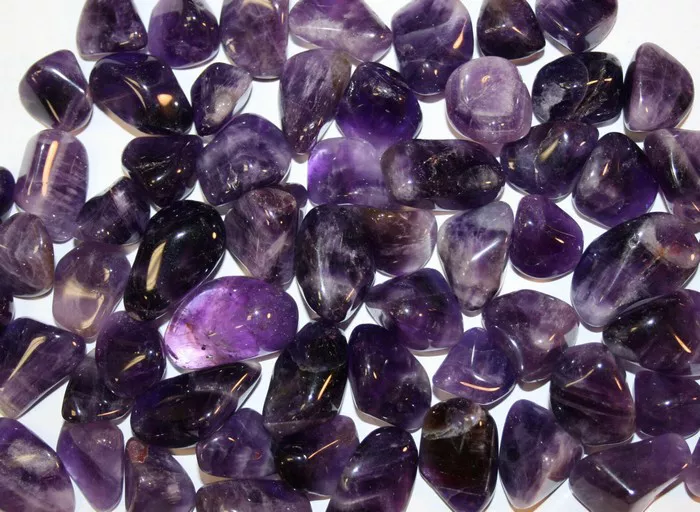Gemstones have fascinated humans for centuries, not only for their aesthetic beauty but also for their perceived metaphysical properties. Among the myriad gemstones available, citrine and amethyst stand out for their distinct colors and purported healing energies. Both citrine and amethyst belong to the quartz family, sharing similar crystal structures. However, despite these similarities, they differ significantly in appearance and metaphysical properties.
Color and Appearance:
The primary difference between citrine and amethyst lies in their coloration. Amethyst typically exhibits a range of purple hues, spanning from delicate lavender tones to deep, regal violets. This purple coloration is due to the presence of trace amounts of iron within the quartz crystal lattice.
In contrast, citrine boasts a warm palette of yellows and oranges, reminiscent of the sun’s radiant glow. This sunny coloration arises from the presence of iron impurities during the formation of the quartz crystals. Citrine’s vibrant hues evoke feelings of warmth, joy, and vitality.
It’s important to note that the line between citrine and amethyst can sometimes blur due to heat treatment. Natural amethyst crystals subjected to high temperatures can undergo a transformation, turning into citrine. This heat treatment alters the crystal structure, causing the purple hues of the amethyst to fade into shades of yellow and orange, resembling citrine. As a result, distinguishing between natural citrine and heat-treated amethyst can be challenging without specialized knowledge or testing.
Natural vs. Heat-Treated:
Understanding the natural formation processes of citrine and amethyst sheds light on their differences. Natural citrine forms when quartz crystals containing iron impurities undergo geological processes that facilitate the incorporation of these impurities into the crystal lattice. Over time, these iron impurities impart the characteristic yellow to orange coloration to the quartz.
Conversely, natural amethyst crystals may undergo a transformation into citrine when subjected to heat and pressure within the Earth’s crust. This natural occurrence occurs over geological timescales and results in the gradual alteration of the crystal’s color from purple to yellow or orange.
However, modern techniques have enabled the artificial production of citrine through heat treatment of amethyst. This process accelerates the transformation, allowing amethyst to assume citrine-like hues within a relatively short timeframe. While heat-treated amethyst may exhibit similar coloration to natural citrine, it retains some of the properties associated with amethyst, blurring the distinction between the two gemstones.
Metaphysical Properties:
Beyond their aesthetic appeal, citrine and amethyst are prized for their purported metaphysical properties and healing energies. Amethyst is renowned for its calming and purifying qualities, believed to soothe the mind, alleviate stress, and enhance spiritual awareness. It is often associated with intuition, psychic abilities, and the pursuit of higher consciousness.
In contrast, citrine is revered for its energizing and uplifting properties. It is said to radiate warmth, positivity, and vitality, stimulating creativity and encouraging abundance in all aspects of life. Citrine is often regarded as a stone of manifestation, empowering individuals to pursue their goals with confidence and optimism.
Ametrine, a naturally occurring blend of amethyst and citrine, combines the complementary energies of both stones. This unique gemstone is believed to harmonize the spiritual and material realms, facilitating balance, clarity, and alignment with one’s highest purpose.
Jewelry and Uses:
Both citrine and amethyst are popular choices for jewelry due to their striking colors and metaphysical significance. Amethyst is commonly incorporated into rings, pendants, earrings, and bracelets, adding a touch of elegance and sophistication to any ensemble. Its rich purple hues make it a versatile gemstone that complements a wide range of metals and settings.
Citrine, with its warm, sunny tones, is often featured in jewelry designs that evoke feelings of optimism and abundance. It is particularly well-suited for settings in warm-toned metals such as yellow gold, brass, or bronze. Citrine jewelry is favored for its ability to infuse the wearer with positive energy and attract prosperity and success.
Care and Maintenance:
Proper care and maintenance are essential to preserve the beauty and integrity of both citrine and amethyst jewelry. To clean these gemstones, simply soak them in warm, soapy water and gently scrub with a soft brush or cloth. Avoid using harsh chemicals or abrasive cleaners, as they can damage the delicate surface of the stones.
When storing citrine and amethyst jewelry, it’s important to protect them from scratches and impact damage. Store each piece separately in a soft pouch or lined jewelry box to prevent them from coming into contact with other gemstones or metals.
It’s worth noting that heat-treated amethyst may be more susceptible to fading or discoloration when exposed to prolonged sunlight or high temperatures. To avoid potential damage, store heat-treated amethyst jewelry away from direct sunlight and extreme heat sources.
In conclusion, while citrine and amethyst share some similarities as members of the quartz family, they exhibit distinct differences in color, metaphysical properties, and formation processes. Whether you’re drawn to the calming energy of amethyst or the invigorating vitality of citrine, both gemstones offer unique benefits and aesthetic appeal. By understanding the characteristics and care requirements of citrine and amethyst, you can fully appreciate their beauty and harness their positive energies in your daily life.


